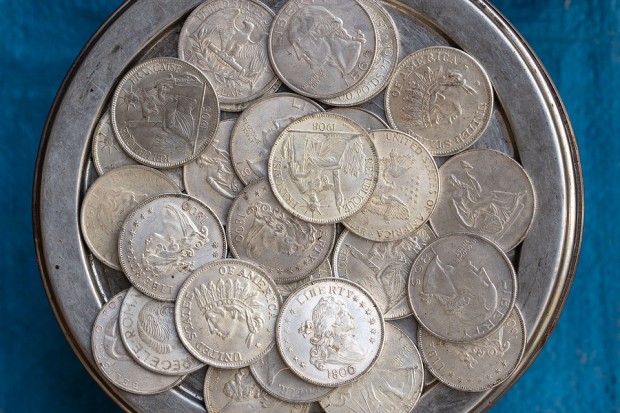Rory Brown, Managing Partner of Nicklaus Brown & Co., on Why Lydian Lion Coins Were Counterfeited
- (Photo : Bigstock) Counterfeit old American coins are sold at local market for tourists in Pushkar, Rajasthan, India
Lydian Lion coins, or staters, were the world's first true coins. They were wildly successful, generating massive wealth for the Lydians. Lydian merchants created the first true, permanent market, and Lydian staters became a default currency for trade between nations.
This widespread adoption of the currency occurred mostly because staters were minted in uniform weights, with a known metallurgical composition. The addition of the Lydian Lion seal, or the famous lion and bull motif, gave these coins an authenticity that was new to the ancient world. Merchants could trust that Lydian coins were worth their purported value, removing the need to weigh and examine each coin.
This dominance of Lydian coins in ancient western Asia Minor was beneficial for Lydia, but also made the currency an obvious target for counterfeiters. The bad players would produce lower quality fakes with less of the precious metals that established their value and profit off of the difference. Rory Brown, Managing Partner of Nicklaus Brown & Co., shares details about why Lydian Lion coins were counterfeited.
Rotten to the Core
These counterfeit staters generally had a silver, billon, or iron core that was plated in gold and then stamped to resemble Lydian coins, completing the illusion.
The fakes were generally found among the lower denomination coins. The larger coins were harder to counterfeit because the weight difference between a large solid gold or electrum coin and an iron one was more obvious than in smaller denominations.
These fakes were created by wrapping a planchet in gold foil and then heating it before using it to strike the coin, transferring the gold in a thin layer. To the untrained eye, these fakes could be fairly convincing, and the ubiquity of Lydian currency assured that counterfeiters would attempt to pass as many fake staters as they could.
Lydian Lion Imitations
Counterfeit coins weren't the only pretenders to the coinage throne. In some cases, other nations minted their own versions of Lydian staters. These weren't counterfeits exactly. They were minted from electrum, silver, or gold and were generally valuable.
But they weren't minted by the central Lydian authority. Instead, groups like the Cimmerians created stater knockoffs to boost the value of their own gold and silver supplies. Lydian staters were in demand, and these imitations were happy to sate what they could.
Lydia Counterfeited Its Own Currency
Interestingly, some notable counterfeit staters were clearly minted using the same dies made to create legitimate coins. It's possible that those in charge of minting coinage in Lydia occasionally attempted to skim a bit off the top. But more likely, these internal fakes were created on the order of the king to stretch their stores of gold and silver and artificially increase their wealth.
Whether counterfeits were created outside the system or by the very mints that created legitimate coinage, the problem was unavoidable. Staters were the dominant currency of the day, and everyone wanted a piece of the action.
About: Mr. Rory Brown is a Managing Partner of Nicklaus Brown & Co., the Chairman of Goods & Services, Nearshore Technology Company, and a member of the board of directors of Desano. He is passionate about delving into the history of money and how our modern currency has evolved into what it is today. In his spare time, he writes about the history of the Lydians - the first civilization to use gold and silver coinage.

















